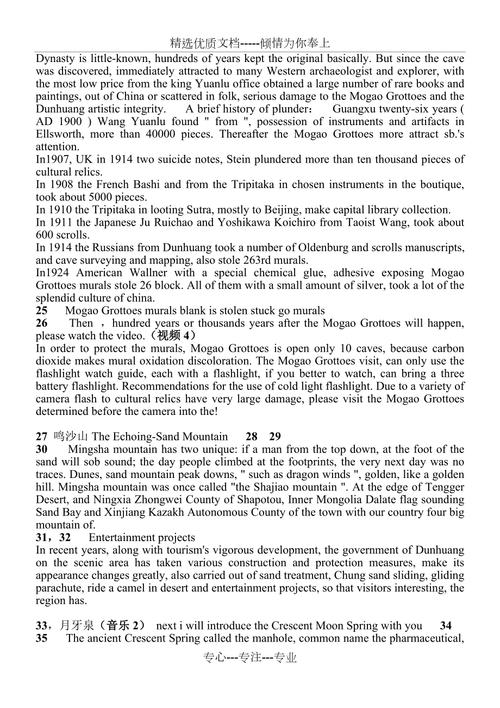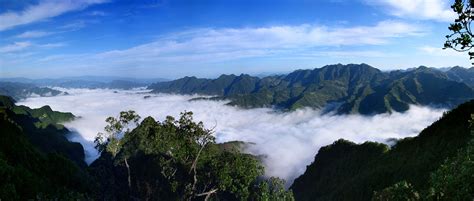IntroductiontoDunhuangArtinChina
Dunhuang art refers to the art and culture that flourished in the Dunhuang region of northwest China during the Tang Dynasty (618-907) and the subsequent dynasties. It is most famous for the Mogao Caves, also known as the Thousand Buddha Grottoes, which are a UNESCO World Heritage Site and contain a vast collection of Buddhist art spanning over a thousand years.
Historical Background
The Dunhuang region was a major crossroads on the ancient Silk Road, connecting China with Central Asia and beyond. This strategic location brought about a rich cultural exchange, resulting in the development of a unique artistic style that combined elements of Chinese, Indian, and Central Asian art.
Artistic Features
Dunhuang art is characterized by its exquisite murals, sculptures, and manuscripts. The murals in the Mogao Caves depict a wide range of subjects, including Buddhist sutras, deities, celestial beings, and scenes from daily life. The sculptures, especially the clay sculptures of Buddhas and Bodhisattvas, are known for their delicate craftsmanship and serene expressions. The Dunhuang manuscripts, discovered in the Library Cave in the early 20th century, are a treasure trove of Buddhist texts, literary works, and documents in multiple languages.
Influence and Legacy
Dunhuang art had a profound influence on the art and culture of China and beyond. Its fusion of different artistic traditions laid the foundation for the development of Chinese Buddhist art. The discovery of the Dunhuang manuscripts also provided valuable insights into the history, religion, and daily life of ancient China.
Preservation and Conservation
Due to the fragile nature of the murals, sculptures, and manuscripts in the Mogao Caves, efforts have been made to preserve and protect this invaluable cultural heritage. Conservation projects have been undertaken to stabilize the caves, prevent further deterioration, and ensure that future generations can continue to appreciate the beauty of Dunhuang art.
Visiting Dunhuang
For those interested in experiencing Dunhuang art firsthand, a visit to the Mogao Caves is a must. The caves are located near the town of Dunhuang in Gansu Province, and guided tours are available to explore this magnificent site. Visitors can marvel at the intricate murals, sculptures, and manuscripts that have survived for centuries, offering a glimpse into the artistic and spiritual world of ancient China.

In conclusion, Dunhuang art is a testament to the creativity and cultural exchange that flourished along the Silk Road. Its enduring legacy continues to inspire and captivate art lovers and historians around the world.










